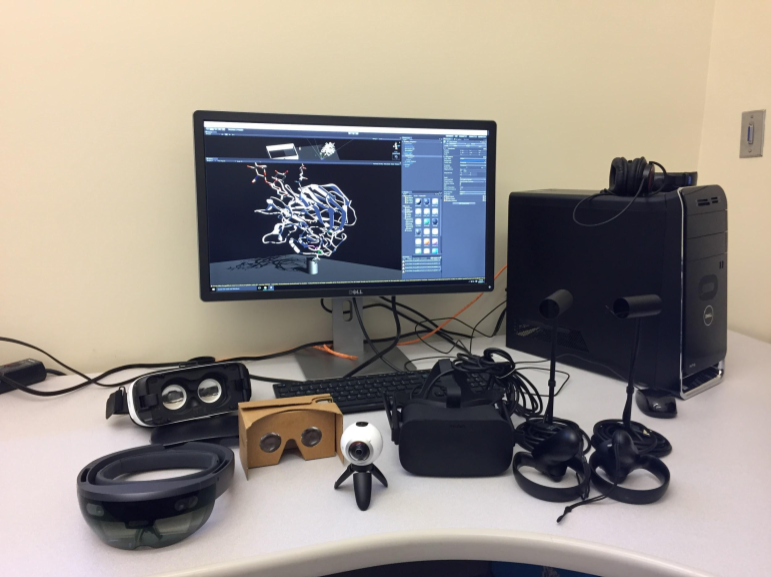Background
Equipment Hardware and Software:
Categories of equipment range from gloves, wands, head mounted displays, to sensors which track body movement. The movement of
users is tracked from a motion sensor in the head mounted display to stationary sensors in the field of operation. With the innovation
of computer hardware and software technology, virtual simulation technology has been applied in various fields, including sports training
and basketball teaching process (Hou et al., 2014, p. 651-653). Of course, it is the combination of all the functionalities utilized through
one interface which creates an efficient piece of technology. The development in sensor technology have come a long way and there is a lot of
science behind the algorithms used to display the interactive 3-dimensional worlds. Using a WLAN link, generated data packets are transmitted to
the associated VR computing device which requires a very high throughput and low latency to satisfy the high-resolution video images (Ahn, et al., 2018, p. 3-5).
The recommended type of hardware to run this type of operation is recommended by the VR manufacturing companies. The Oculus Rifts basic requirements are:
- A video card, NVIDIA GTX 1060 / AMD Radeon RX 480 or greater
- A CPU, Intel i5- 4590 equivalent or greater
- Memory, 8GB+RAM, video output, compatible HDMI
1.3 video
- USB ports, 3x USB 3.0 ports plus 1x USB 2.0 port
- An operating system, Windows 7 SP1 64 bit or newer
While this can get expensive, the hardware required to experience VR worlds should be capable of seamlessly running the necessary programs with ease.
What constitutes a Virtual Reality:
The entirety of the VR experience needs to be believable, but what does this entail? The technology should be interactive, explorable and immersive. To do this
requires a computer-generated interface because the user is witnessing a virtual world in real-time, capable of moving around and exploring the environment (Woodford, 2018, para. 3).
The experience should be mentally and physically engaging, which means manipulating every sense possible to create this believable virtual reality.
Imagine the rumbling in the hands of a racecar driver gripping the steering wheel crossing the finish line, the sound of artillery above as a fighter pilot enters the cockpit, or the sight through a rifle scope on a mountain top as a hunter scans the horizon. These otherwise unimaginable activities become possible when beginning to alter our senses and the minds perception of reality. Tactile and audible interactivity combined with sight and motility in a computer-generated world manipulates the human senses just enough to create a convincible virtual reality experience. The applications in VR are seemingly limitless.

Will Lawson - IT104-006 - George Mason University

